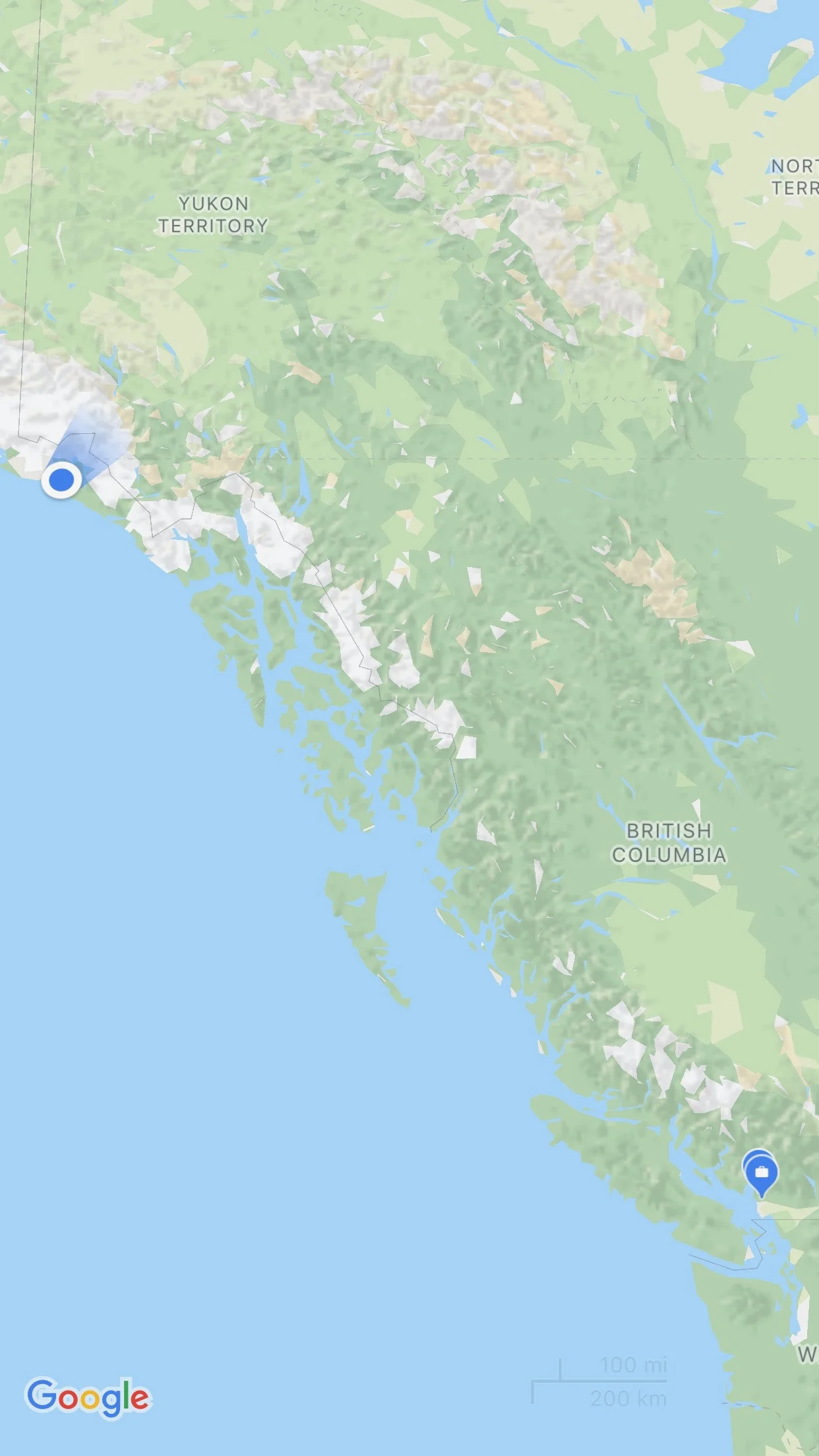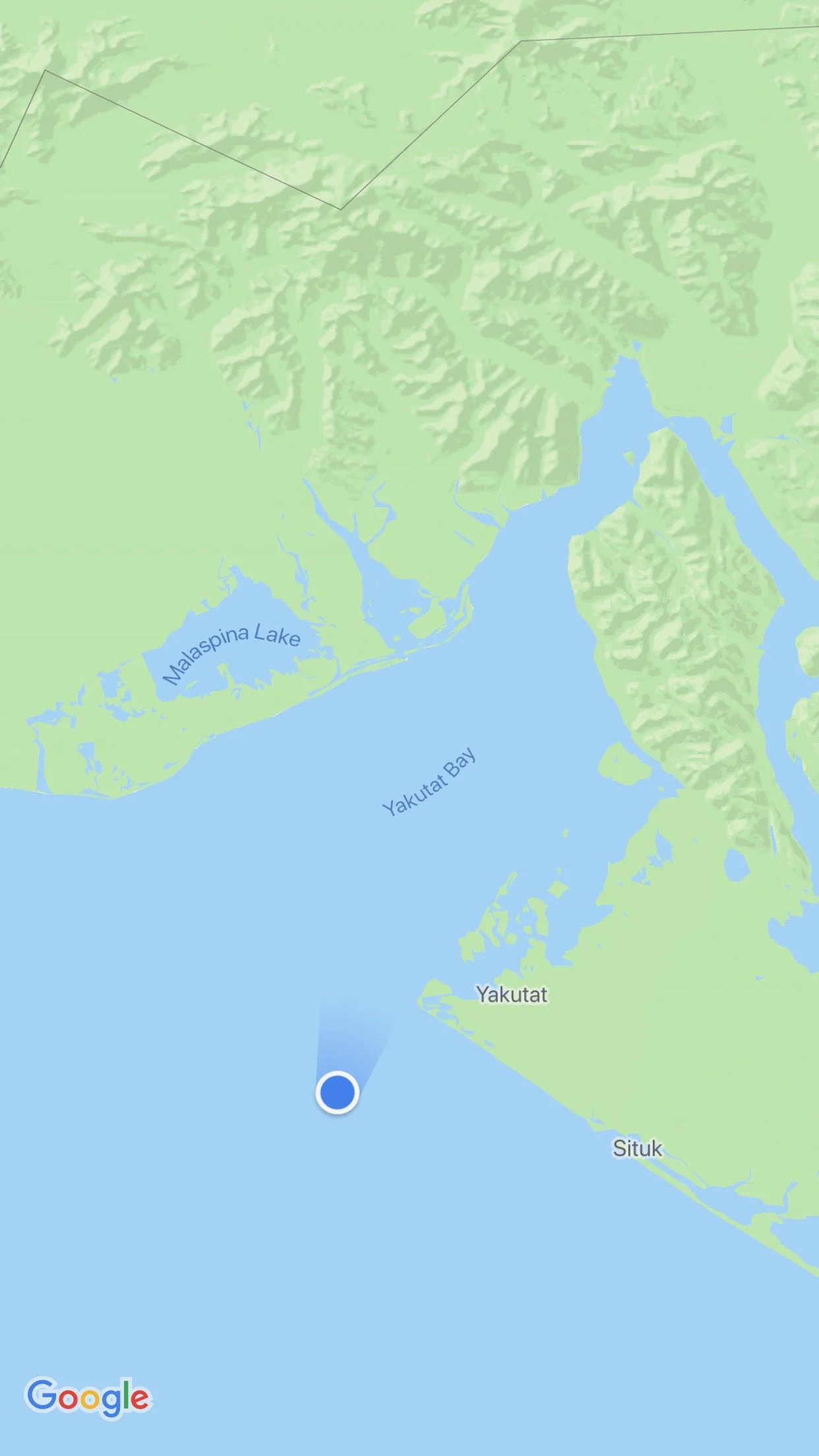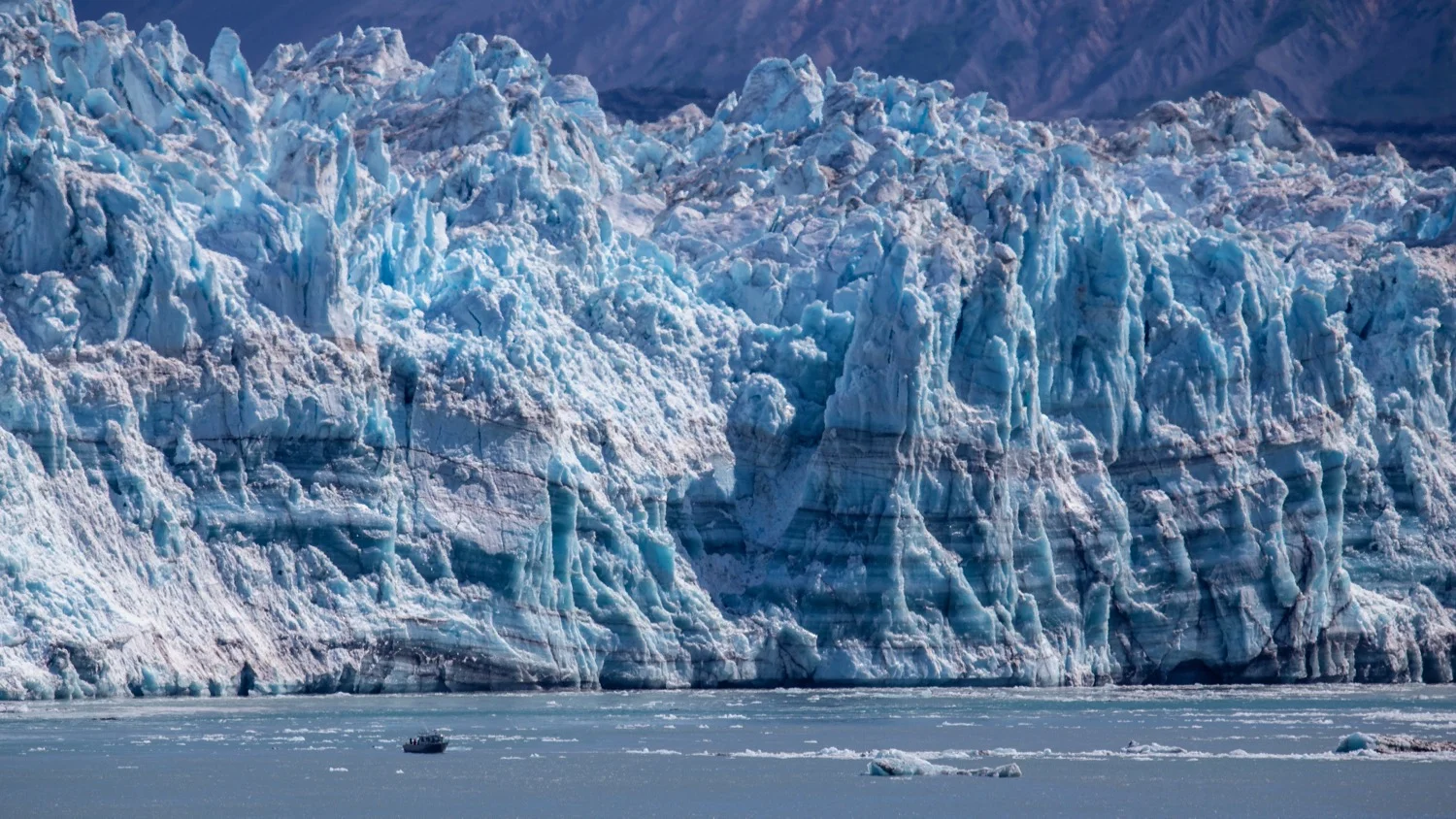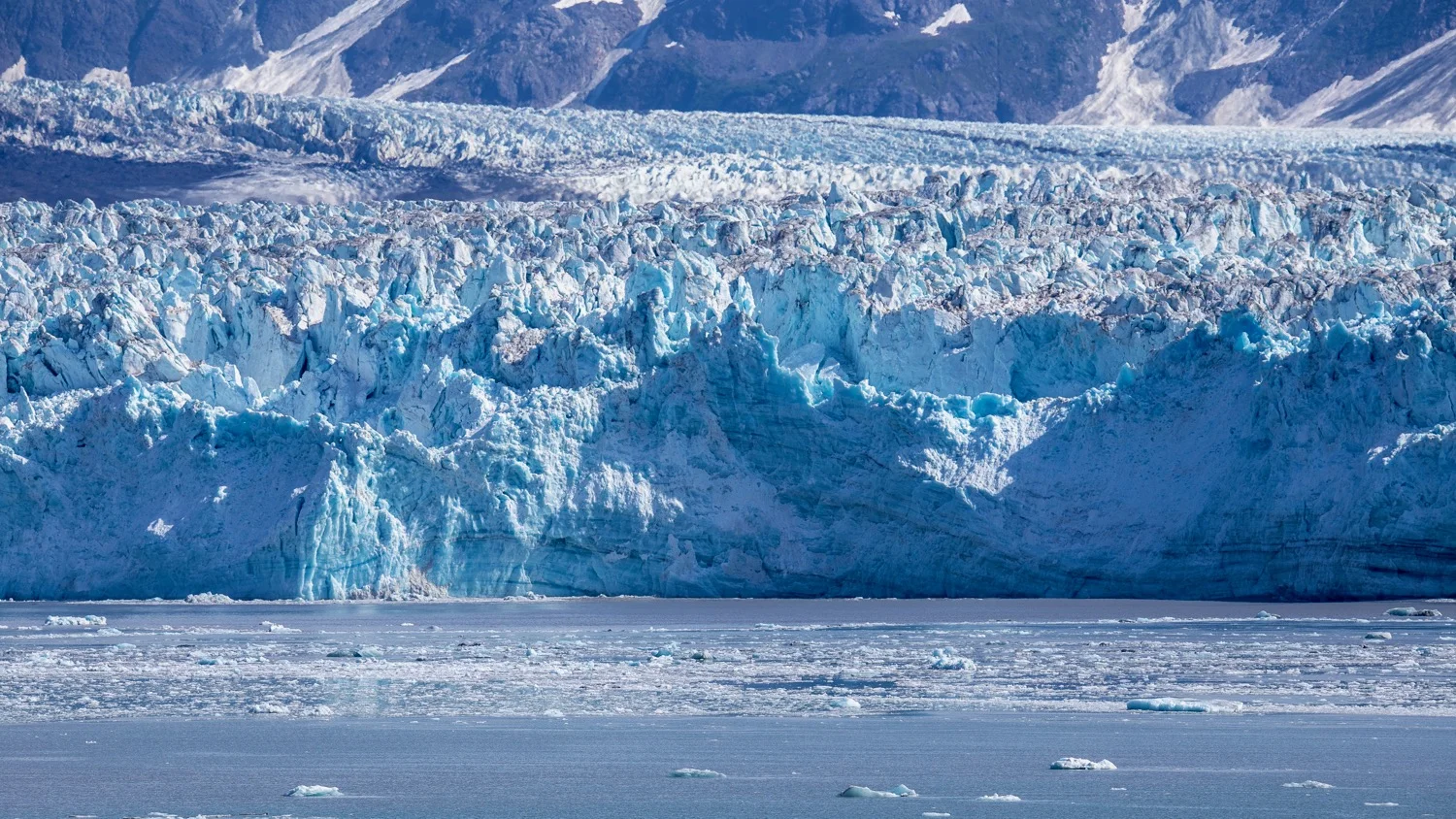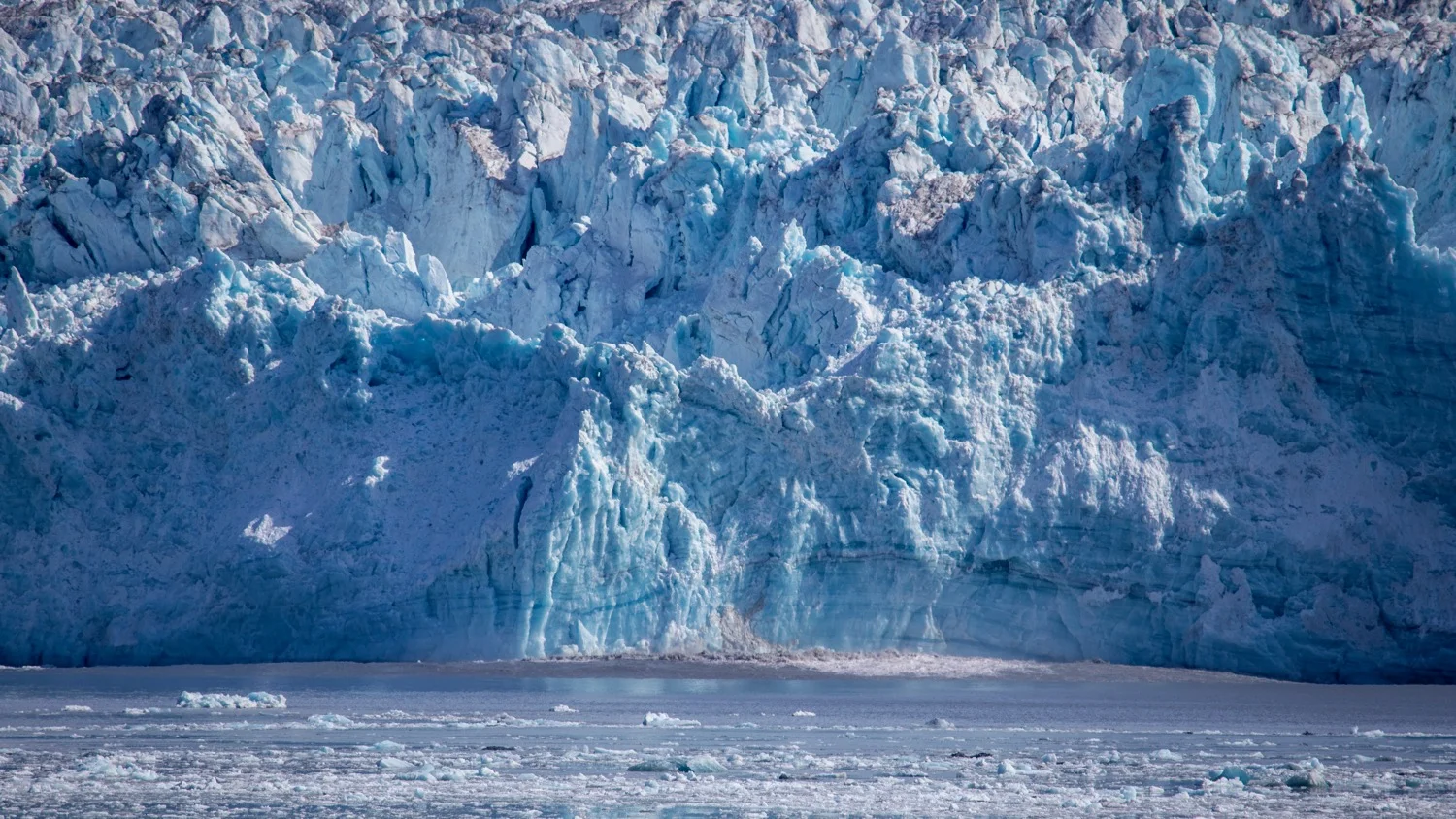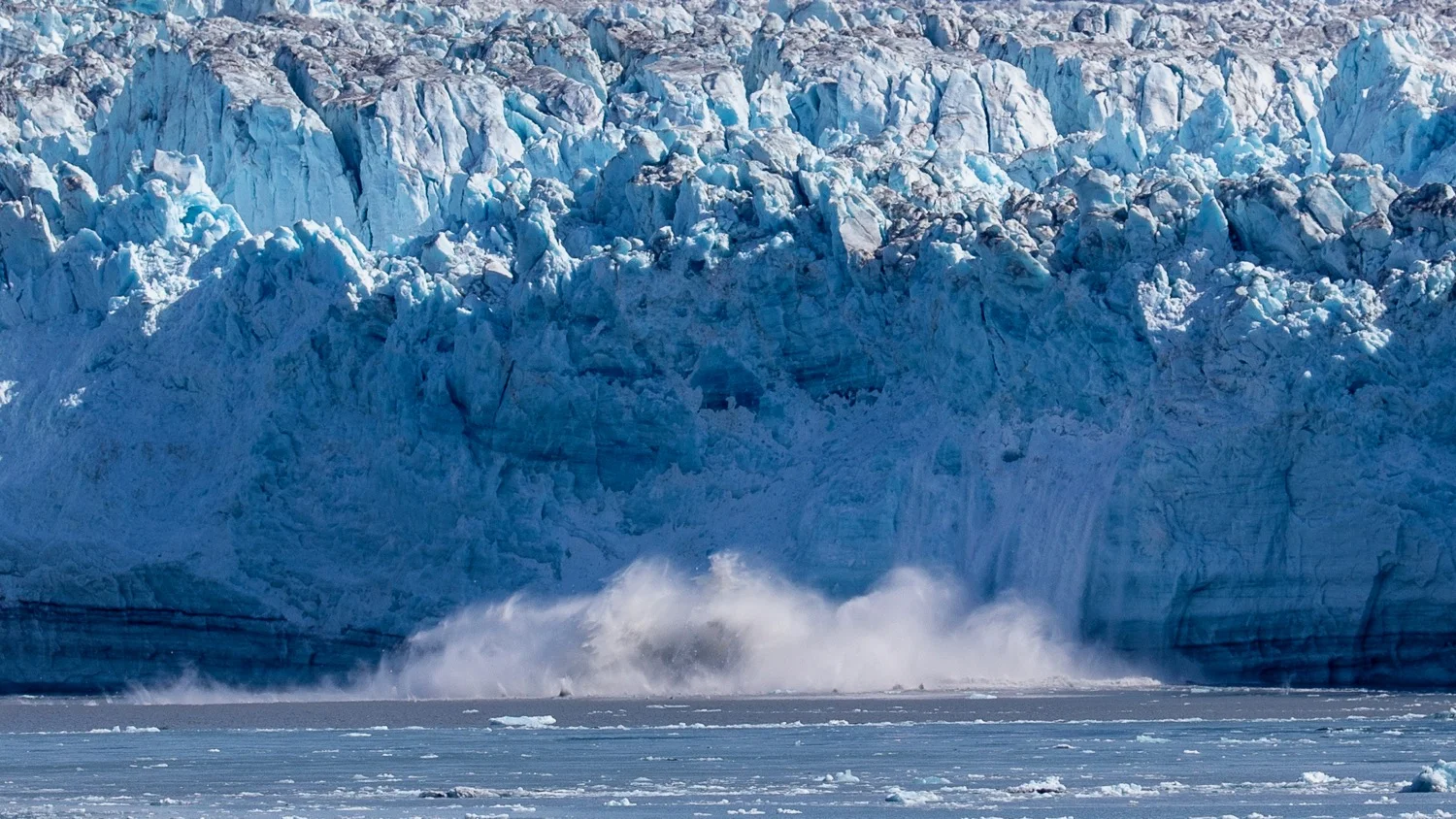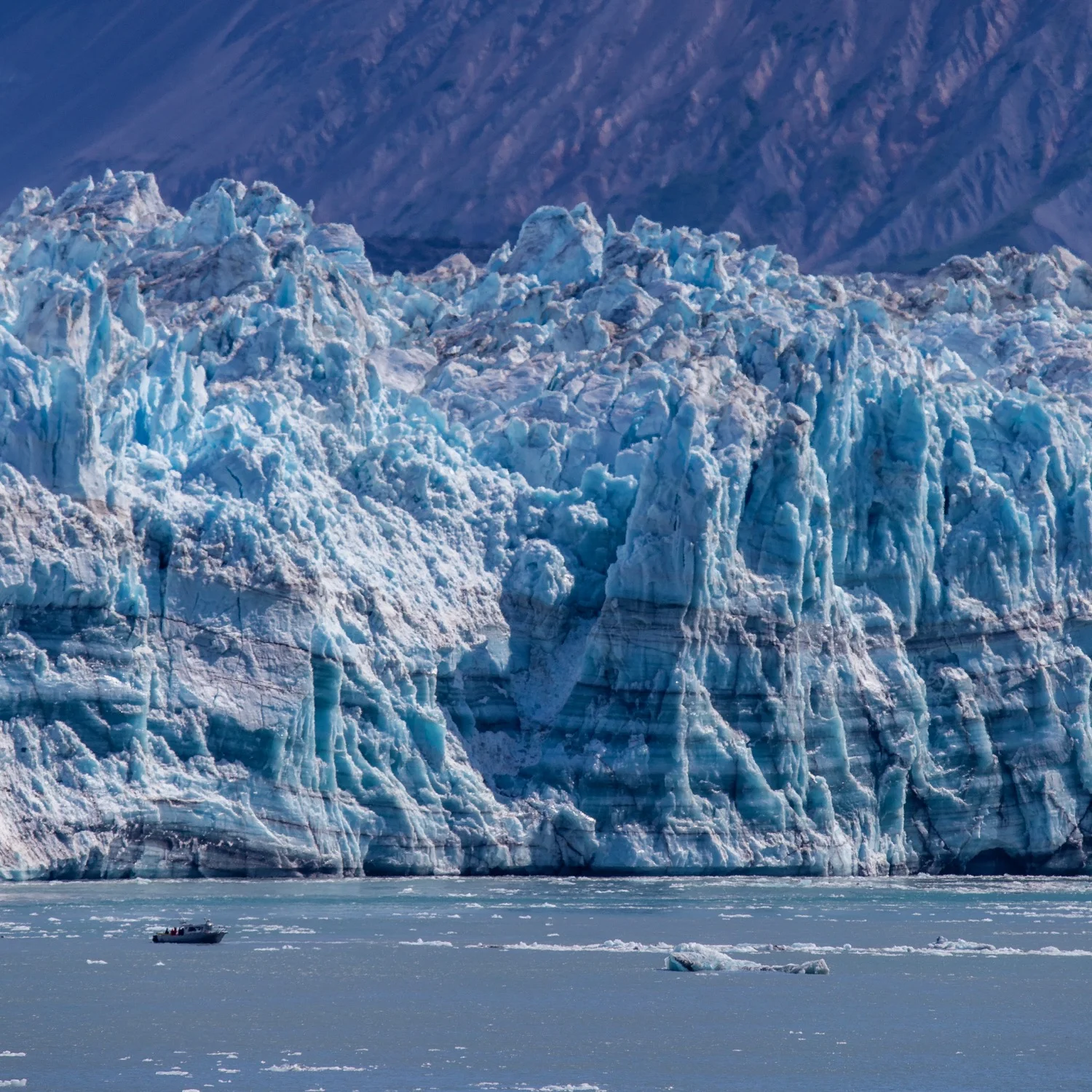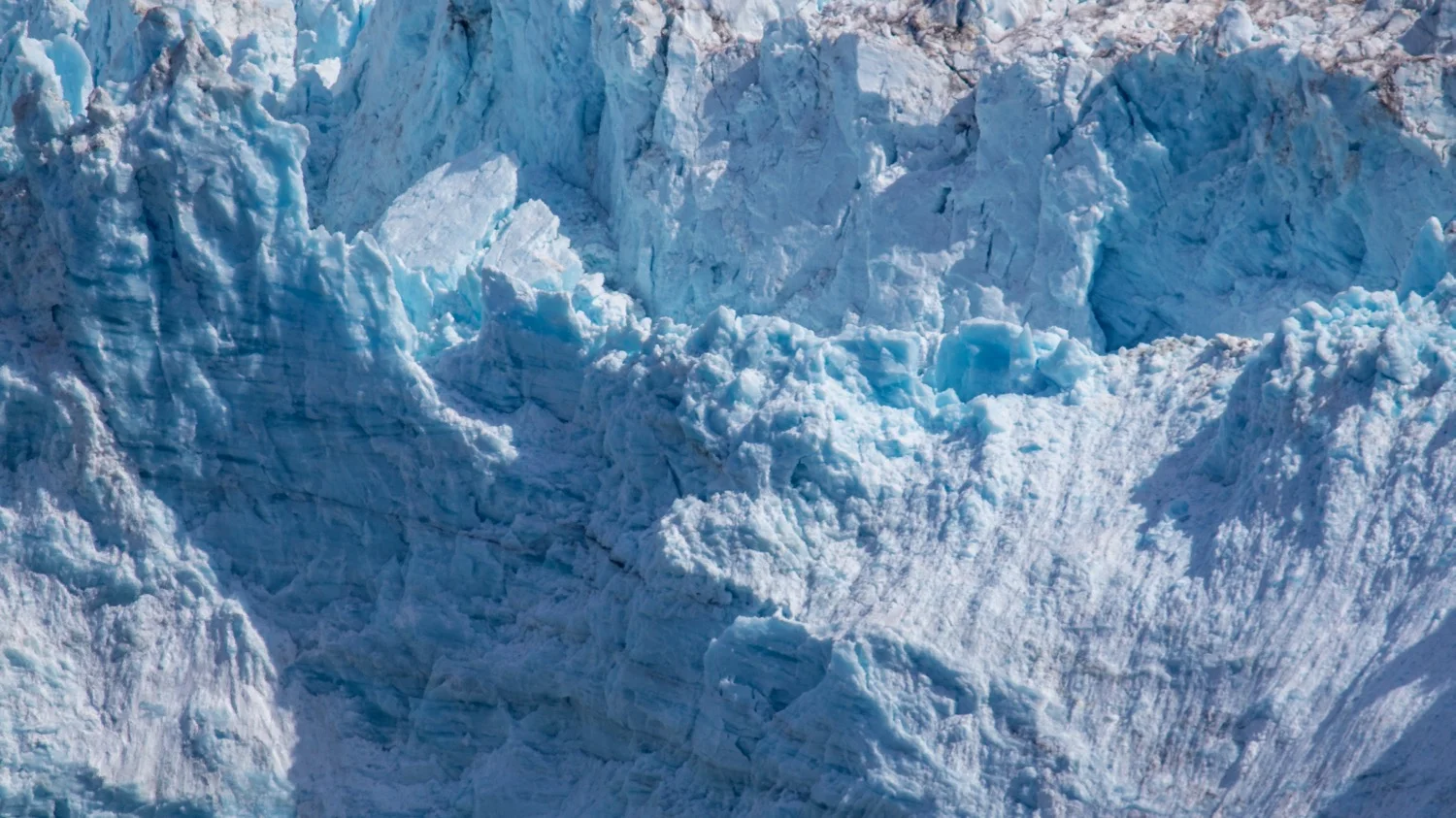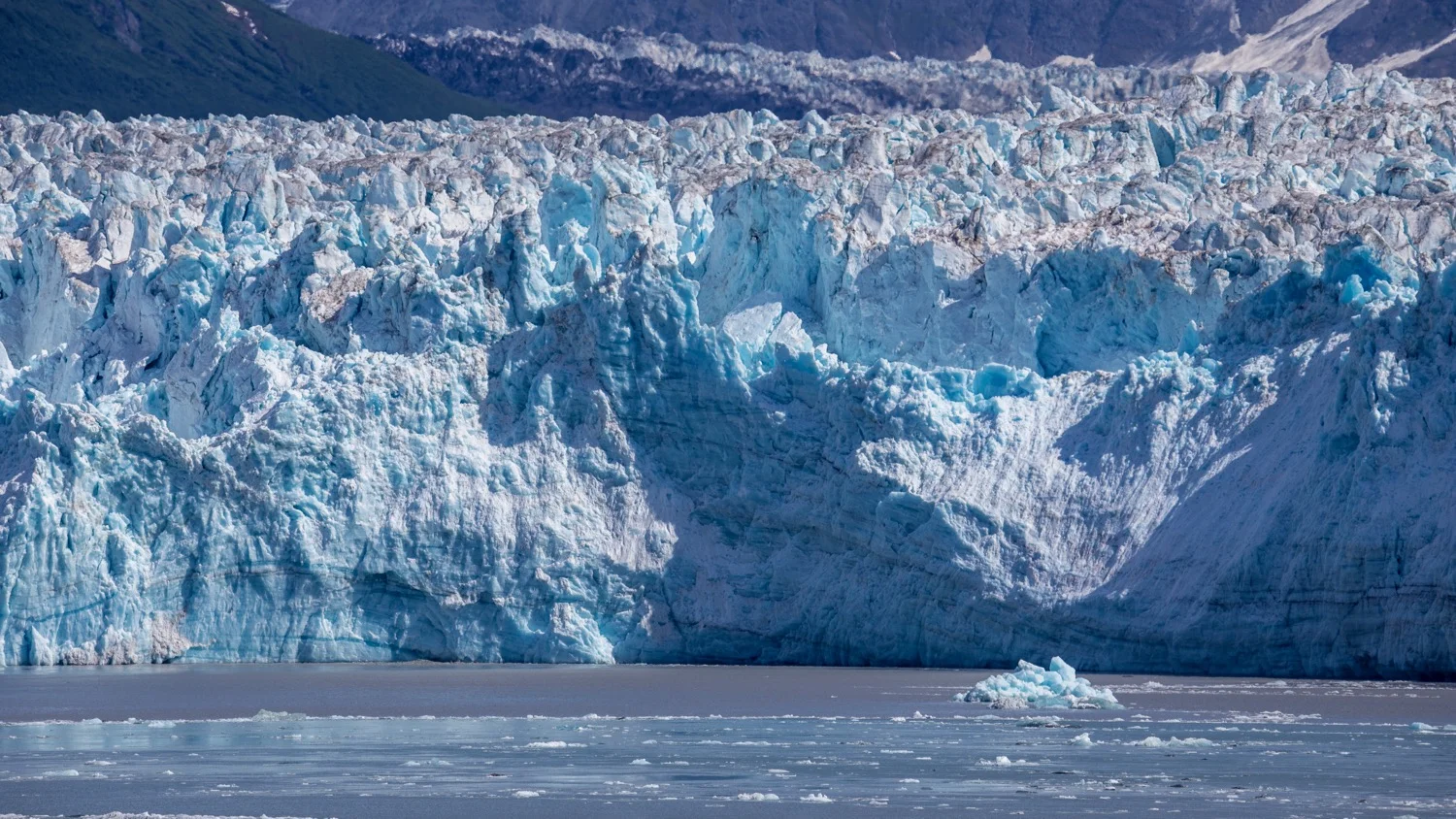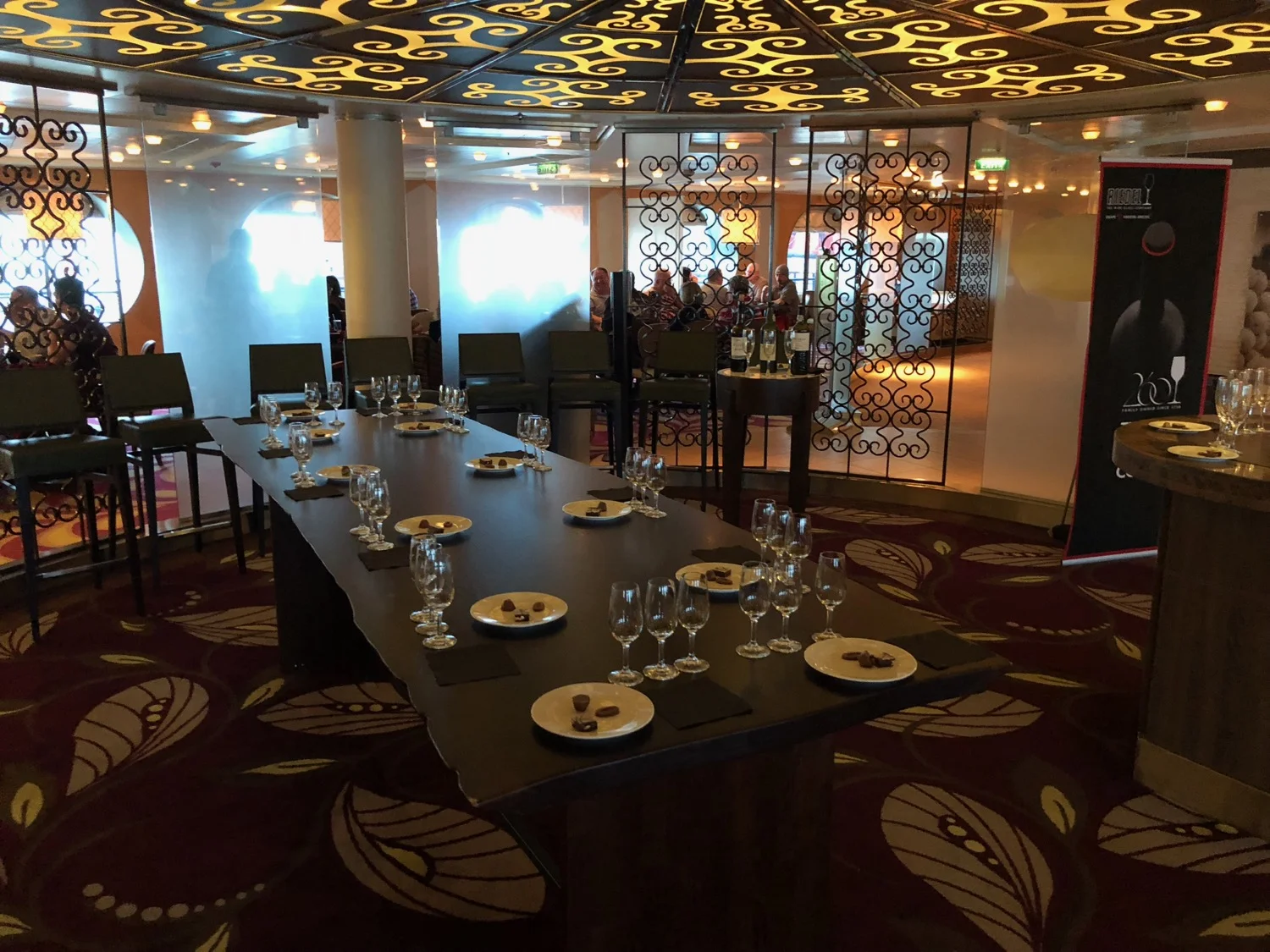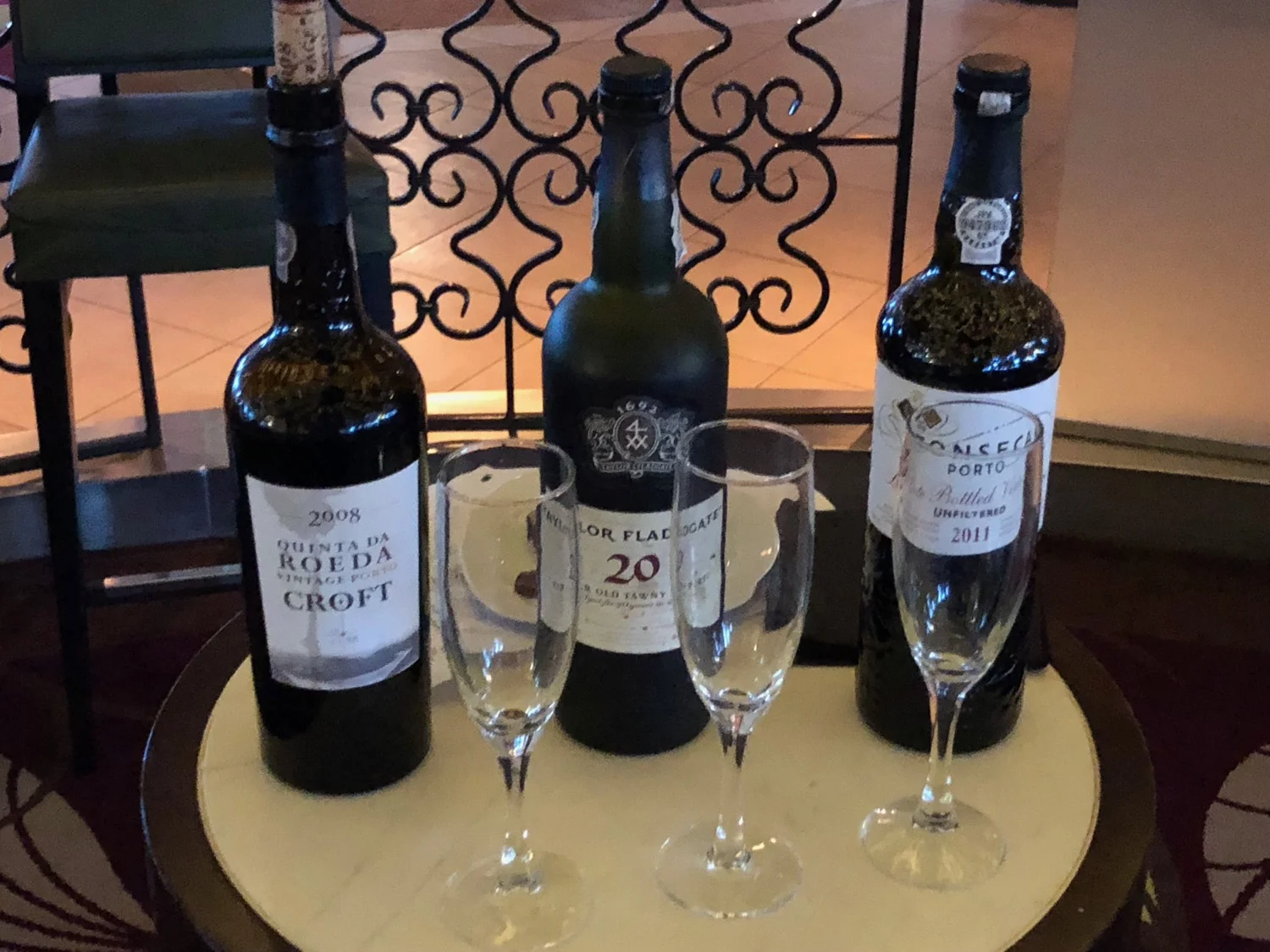Fro Vancouver to the Hubbard Glacier our full trip
Today was the highlight of the cruise - an up close look at the Hubbard Glacier! It was the furthest point north that we were going, and the captain and pilot did an amazing job of getting us within a mile of the glacier. It was an incredible sight.
We awoke the morning of July 4th a number of miles off the northernmost point of our journey. We were still a ways out from the mouth of the fjord leading to the glacier, but the view were already spectacular.
From our balcony, we had a view of the mountain range leading into the glacier, with Mount Saint Elias looming over all of it. As we got closer into the inlet, we had more and more spectacular views of the mountain.
Interestingly, Mount Saint Elias is the second highest mountain in both Canada and the United States, being situated on the Yukon and Alaska border. It lies about 40 kilometres southwest of Mount Logan, the highest mountain in Canada. The Canadian side is part of Kluane National Park and Reserve (which we have been to), while the U.S. side of the mountain is located within Wrangell-St. Elias National Park and Preserve.
Not a bad view to wake up to.
Where we were as we started to head inot the fjord
We again ordered breakfast in our room and spent the first part of the morning looking for whales. I saw the dorsal fin of an orca pretty far out, but didn't see much other than that.
We relaxed for a bit, then headed up to the top deck of the ship to scout a spot to sit and take photographs. We expected the top decks to get really busy, and they certainly were.
We were early, and found a great spot on the upper deck - not right at the front (the glass windows made taking photos impossible), but a little ways back with clear views forward and to the side. They had mentioned that once we were in, the captain would rotate the ship to give everyone a great view.
As we made out way into the fjord, we started to get glimpses of the glacier off in the distance, and started to get the first pieces of ice floating in the water.
The mountains continued to drift by as we made out way in, and it is impossible to describe how beautiful the whole scene was.
One of the first interesting pieces of ice, floating by...
There were lots of glaciers on the local peaks.
A view off the front of the ship, as we headed into the fjord.
One of the few critters we saw - this harbour seal was hanging out around this piece of ice.
Our first view of the Hubbard Glacier, from a good 10 miles out.
Hubbard Glacier is located in eastern Alaska and extends into the Yukon, and is named after Gardiner Hubbard. We were told that it is the largest tidal glacier in North America, but I couldn't find anything to back that up, and there are no real lists online.
Russell Fjord is the "arm" up and to the right of the blue dot.
The longest source for Hubbard Glacier originates 122 kilometres from its snout and is located at about 8 km west of Mount Walsh with an elevation around 11,000 feet (3,400 m). A shorter tributary glacier begins at the easternmost summit on the Mount Logan ridge at about 18,300 feet (5,600 m), within Kluane Park.
Before it reaches the sea, Hubbard is joined by the Valerie Glacier to the west, which, through forward surges of its own ice, has contributed to the advance of the ice flow that experts believe will eventually dam the Russell Fjord from Disenchantment Bay waters.
The Hubbard Glacier ice margin has continued to advance for about a century. It takes about 400 years for ice to traverse the length of the glacier, meaning that the ice at the foot of the glacier is about 400 years old. The glacier routinely calves off icebergs the size of a ten-story building.
Where the glacier meets the bay, most of the ice is below the waterline, and newly calved icebergs can shoot up quite dramatically, so that ships must keep their distance from the edge of the glacier in Disenchantment Bay. We didn't see any dramatic cavings, and the naturalist mentioned that since it's so warm, they don't see as many big icebergs as they used to. We saw a few small calving events, and the sound of them, even if small, was amazing!
A better, more clear view of Mount Saint Elias
As we moved deeper into the fjord, there was a lot more ice floating everywhere. The tide line was very apparent, with a huge amount of glacial silt and ice trapped by the moving water.
There was a bit of wildlife - a Pacific Loon taking flight.
As we headed deeper into the fjord, there was so much ice floating by! Not icebergs, but smaller pieces that don't qualify. My MDA days of doing ice classification with RADARSAT-2 came in very handy. Most of what we saw are technically "growlers" - less than a meter above the sea. There were some "bergy bits" (1-5 meters), but nothing that qualified as a true "iceberg (small berg = 5-15 m; medium berg = 16-45m; large berg 46-75m and very large bergs = 75m+). Maybe it was good we didn't see any of the latter classes...
There were so many interesting shapes, sizes and different colours of ice in our little growlers. I took a lot of pictures of ice - more than you probably want to see. I think I'll do a separate post with just the ice shots, in case anyone is really interested.
It felt like we were a long way from anything, but that must not have been the case as we saw a couple of small fishing boats while we were in the bay.
There were once three glaciers that all converged into this part of the bay. The Hubbard is the largest, and really the only one that was still there. There were two other smaller ones that were pointed out to us that had a little bit of ice still coming down, but they were effectively gone. All this has happened in the last 5 years! Or that was what we were told anyway. If you haven't been up to see it, you might want to do so sooner, rather than later. I'm gad we went and saw it.
One of the other glaciers that has just about dissappeared.
Eventually the captain took the ship into the bay and as close to the face of the glacier as he could. We got inside 1 mile, and even from that distance the glacier dominated the view. The thing is huge - It is the longest tidewater glacier in Alaska, with an open calving face over ten kilometres wide! It is over 600 feet tall at its terminal face with 350 feet exposed above the waterline and another 250 feet below the waterline. Our ship was big, but it dwarfed it, and made the fishing boats look like miniature figures.
Again, I probably have way too many pictures of ice, and photos don't really do it justice. Once we were as close as we were going to get, the captain spun the ship around two complete revolutions to give everyone a great view.
We saw, and I managed to capture a number of small calving events. We heard many more that we didn't see.
You could see where the glacier was at risk of closing off Russell Fjord.
As mentioned, we weren't alone in the bay by any means. After the ship had done it's rotations, we started to head back out and towards our next port of call in Juneau. As we left, our side of the ship was quite close to shore, and we had a chance to scout the shoreline for anything interesting - they claimed you might see bears. We didn't, but there were some kayakers drifting among the pieces of ice along the shore of one of the local islands. We still have no idea how they got there - I have to assume one of the smaller boats we saw must have dropped them off.
As you might expect, some of the ice washed up on shore.
Looking back at the Hubbard Glacier and Disenchantment Bay as we headed back south.
One of my favourite shots - floating ice, the glacier and the mountains that feed it all. Such an amazing view.
Yes, more ice but I had to include this one - it looks like an orca made of ice!
After taking hundreds of photos (I saved you from most of them...) and being very sore from standing up on the deck for hours, we headed back down to our room to sit out on the deck and watch the scenery go by. I have to mention the weather - it was absolutely perfect. Full sun, barely a cloud in the sky and so clear. Not what we were warned of, and the naturalist kept saying that they see weather like that maybe a few times a season. We got very, very lucky!
We had lunch on our deck (grabbing food to go from the buffet)and relaxed for a while.
The photographer in action.
After lunch, I left Justine to relax and I went and played in a little poker tournament in the casino. It was horribly organized and run - these people clearly don't know what they are doing - and the structure of the tournament gave yo almost no play. I ended up 3rd out of 10 (but of course they only paid top 2), and eventually made my way up to the Constellation Lounge where Justine had been hanging out. She saw a few porpoises as we had been travelling south, but not much more.
As we headed south, there were lots more beautiful mountains and glaciers, dominated by Mount Fairweather. Mount Fairweather is the highest mountain in British Columbia, with an elevation of 4,671 metres (15,325 feet). It is located 20 km east of the Pacific Ocean on the border of Alaska, and most of the mountain lies within Glacier Bay National Park and Preserve.
One of the views of mountains and glaciers as we headed south.
Mount Fairweather, domiating the small fishing boats out at sea.
We had an early dinner as we had signed up for a port tasting that evening. Dinner was excellent as usual, and we sat at our regular table. After dinner we hung out in the Cellar Master bar (also where the tasting was) and played cards until 9 p.m. The tasting wasn't very good - the people at the event were really annoying, and the choices of port were OK at best.
We took a glass with us up to the room and called it a night as we continued our journey towards Juneau. What a spectacular day!






















